Visiting Mars in Beijing
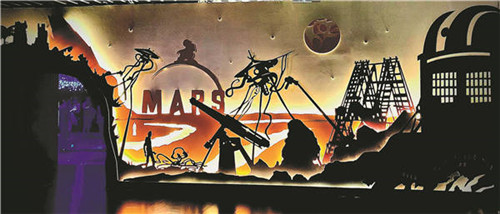
The Mars 2035 multimedia exhibition at Beijing's Millennium Monument creatively presents over 100 items that explore our scientific and cultural understanding of the red planet. [Photo by Erik Nilsson/China Daily]
An exhibition in the capital explores the art and science of our understanding of the red planet, Erik Nilsson reports.
While international travel is restricted because of COVID-19, Beijing residents can still make an interplanetary trip without leaving the city.
They can even get their passports stamped at display halls during their visit to the red planet at the Mars 2035 exhibition running at the Millennium Monument.
Indeed, the show, which ends on Tuesday, literally examines the art and science of understanding Mars. The multimedia displays, which are curated in a style more befitting of a gallery than a museum, explore how it has been understood not only by astronomers but also by pop-culture creators, such as writers, TV producers and filmmakers.
There are not only models of heavenly bodies, telescopes and rockets but also of Martians, including "little gray" humanoids, squid-like monsters and fierce four-legged beasts.
Highlights of the over 100 items on show include copies of the Golden Record: images and sounds of Earth sent on Voyager in case the craft encountered intelligent life; a mirror-walled room with fiber-optic lights dangling from the ceiling and swirling galaxies projected on the floor; a model of Mars that's 2.5 meters in diameter; and a six-legged fanged monster that suddenly snaps its jaws when visitors touch its claws.
Some displays are out of this world in another sense-that is, seemingly random.
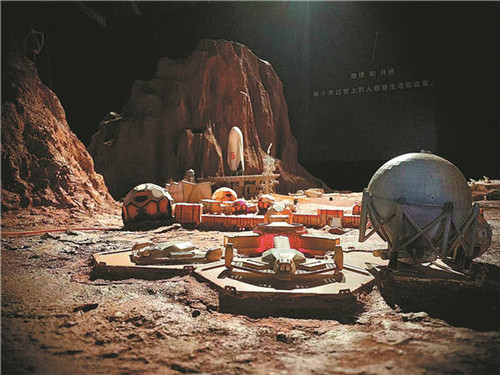
The Mars 2035 multimedia exhibition at Beijing's Millennium Monument creatively presents over 100 items that explore our scientific and cultural understanding of the red planet. [Photo by Erik Nilsson/China Daily]
For instance, a triceratops head mounted on a wall, a skull wrapped in wire and angel statues don't have any clear connection with our neighboring planet but do infuse a bizarre feel that adds to the fun.
The Past Theater hall examines the planet's retrogrades, when it appears larger and brighter as Earth passes it every other year.
The Century Fantasy section imagines Martians, who were previously believed to inhabit the planet after astronomers in the late 19th and early 20th centuries detected around 400 "canals" that are actually optical illusions.
The Night of Opposition artistically renders themes from H.G.Wells' 1897 sci-fi epic, The War of the Worlds, in which creatures from the red planet invade London. The story is believed to be a commentary on imperialism. It's perhaps best known today for an incident in 1938, when it was presented on a radio show and supposedly caused mass hysteria since listeners thought it was real.
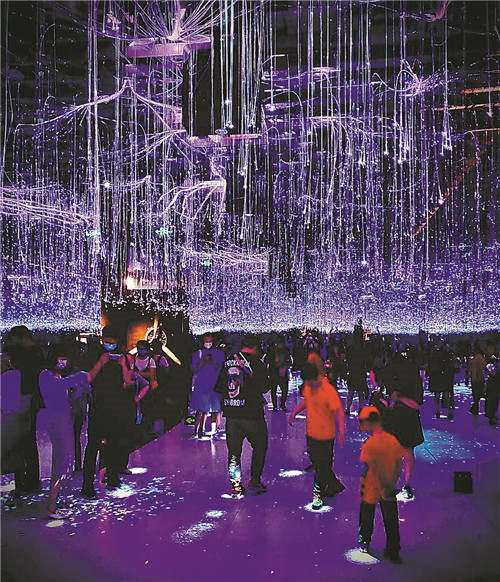
The Mars 2035 multimedia exhibition at Beijing's Millennium Monument creatively presents over 100 items that explore our scientific and cultural understanding of the red planet. [Photo by Erik Nilsson/China Daily]
Looking out of a giant window and smaller side one reveals realistic scenes of the aliens' three-legged war vehicles attacking a farm, replete with explosions and fires.
The Naked Eye 3D Rocket Show displays the rockets, probes and rovers that humans have sent to the red planet as well as other extraterrestrial destinations.
Mars captivated the public's imagination this year with NASA's Curiosity rover and China's Tianwen 1 probe. Tianwen 1 was delivered by the Long March 5, which also brought the lunar-sample return probe Chang'e 5 back to Earth. It has the second-highest carrying capacity, and is able to transport 6 tons to Mars and 9 tons to the moon.
China became the second country to land a rover on the fourth planet from our sun earlier this year. The vehicle's name, Zhurong, comes from a mythical fire deity, since the Chinese name for Mars translates as "fire planet".
Red Homeland features a model of a hypothetical colony. Scientists believe residents should live underground, melt subterranean ice, and grow wheat and potatoes.
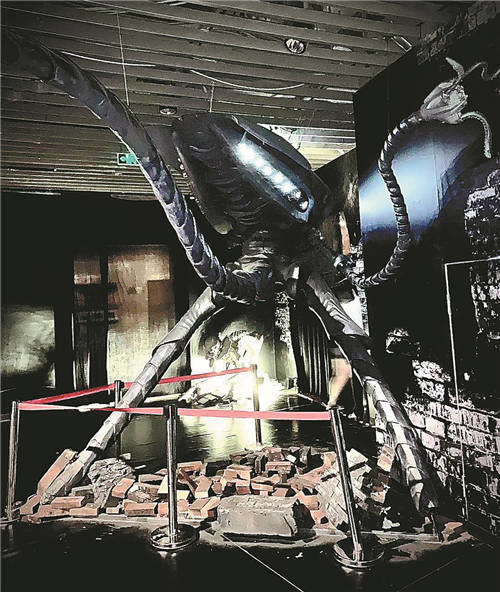
The Mars 2035 multimedia exhibition at Beijing's Millennium Monument creatively presents over 100 items that explore our scientific and cultural understanding of the red planet. [Photo by Erik Nilsson/China Daily]
Martian Wonderland charts the planet's geography, including its white polar ice caps; the 4,300-kilometer Valles Marineris, which is our solar system's largest canyon; and the Olympus Mons volcano that juts three times higher than Everest.
The namesake hall, Mars 2035, takes its name from the fact that is when the planet will be closest to ours since 2003.
Previous oppositions-the term for when Mars and the sun are on directly opposite sides of our planet-were periods of discovery, especially in the early days of telescopes. In fact, it was during the opposition of 1877 that Italian astronomer Giovanni Schiaparelli detected the first "canals".
Indeed, we've learned a lot since then.
And Mars 2035 entices us to wonder what else we'll learn about the red planet and cosmos over time and space.

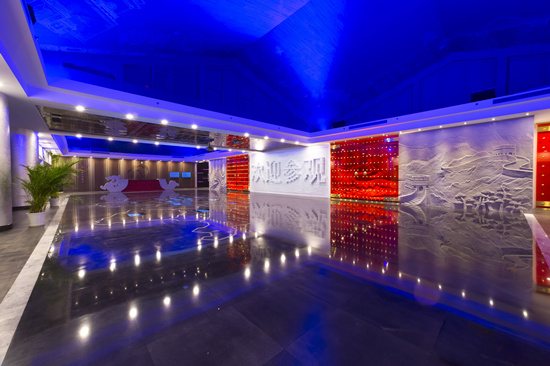 Responsibilities of the SOCAAC
Responsibilities of the SOCAAC Experiencing Beijing 2023
Experiencing Beijing 2023